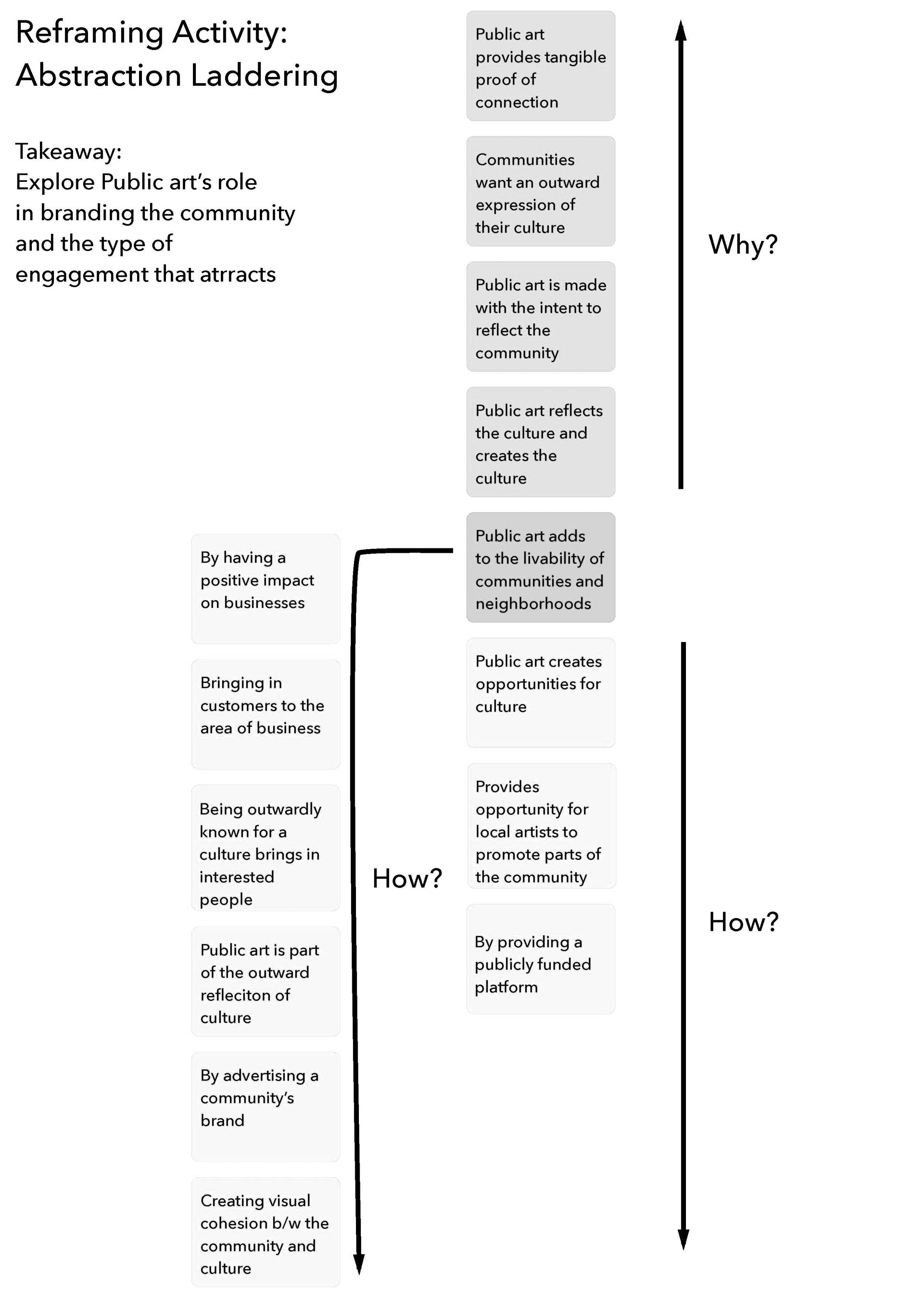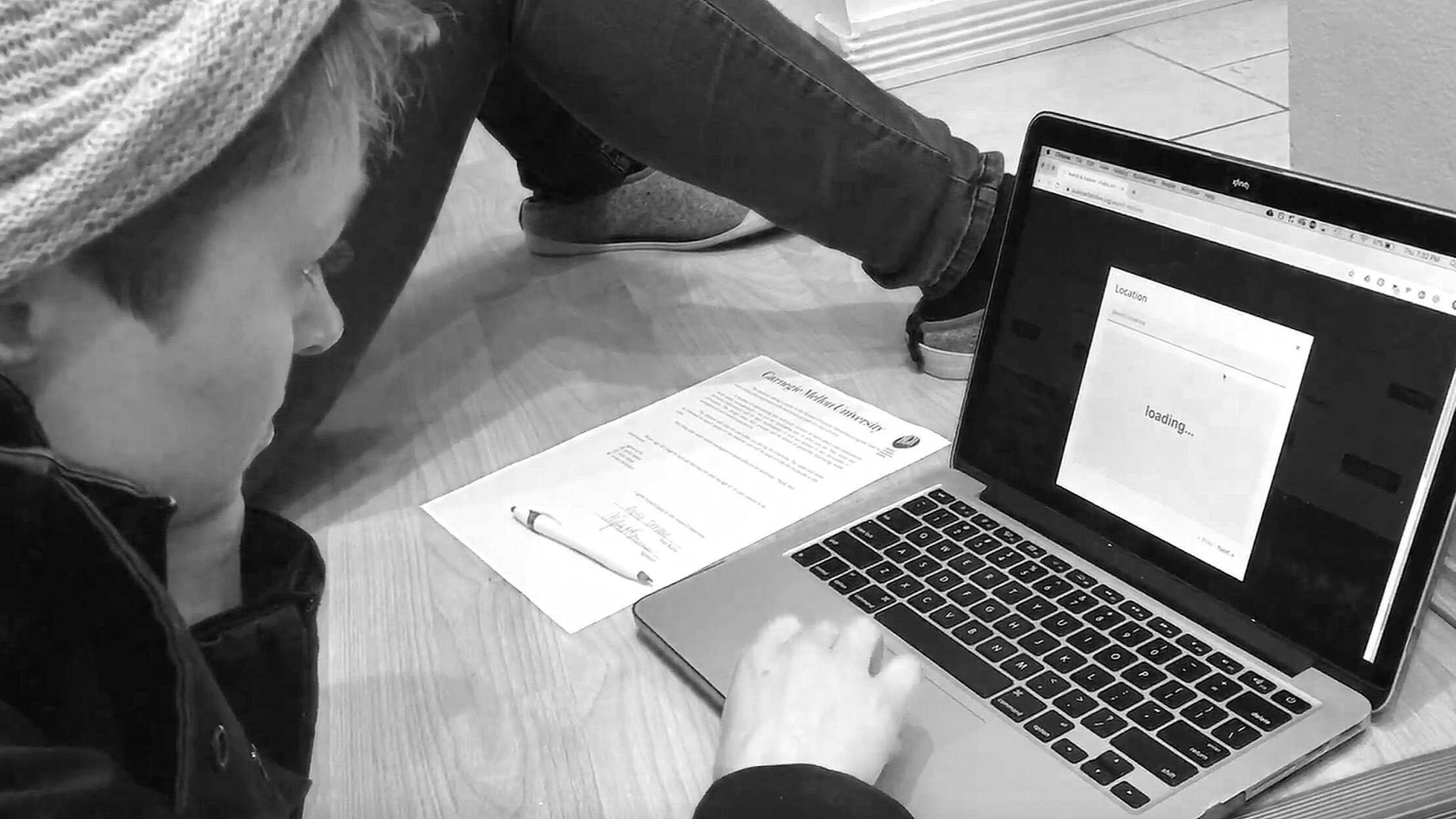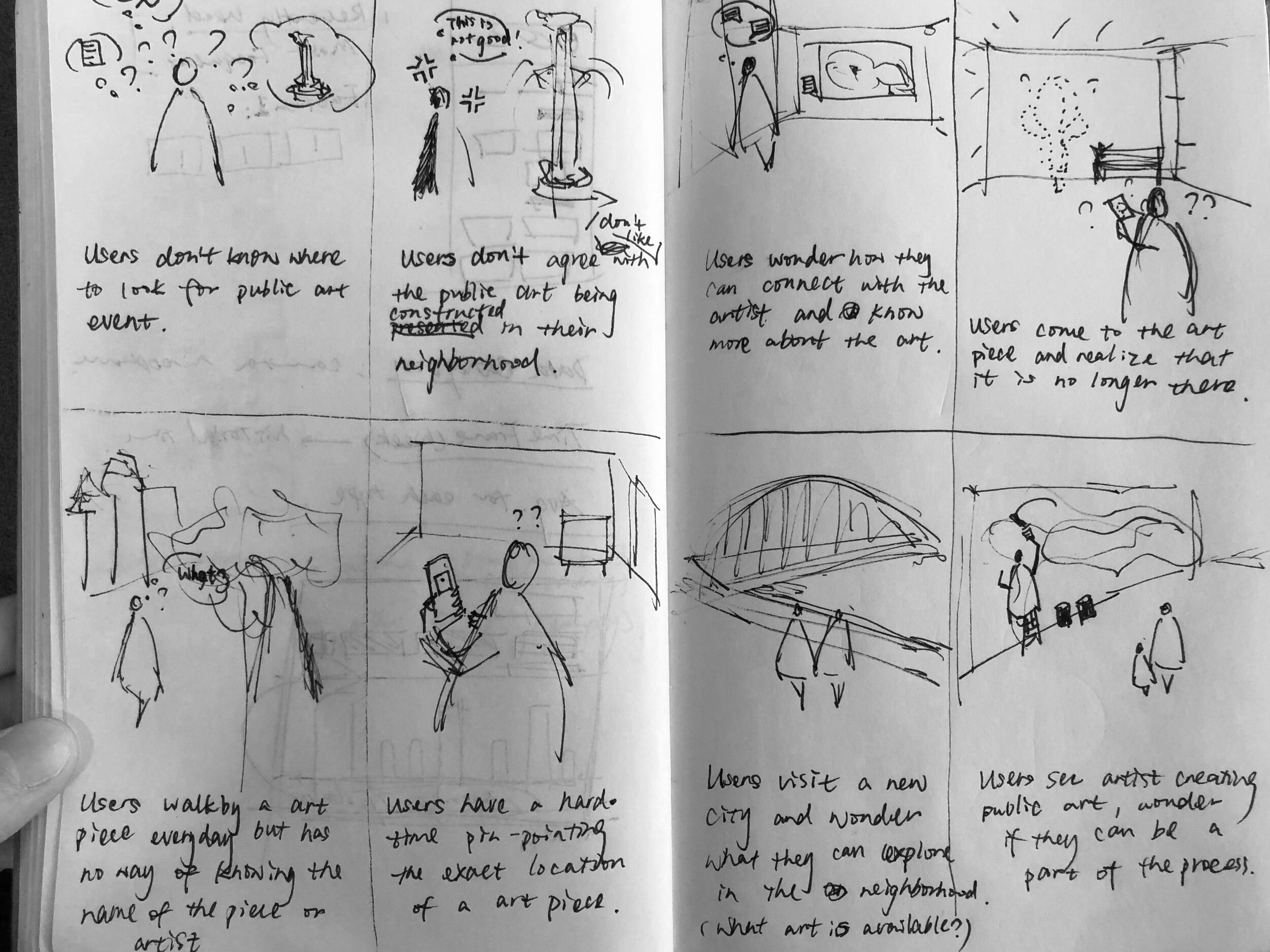
User Centered Research Methods
Over the course of this project, the team focused our research on how citizens viewed the public art, and how that impacted their feelings towards their community.

Observe and Intercept
“Artists are messengers. Everyone has a voice, but not everyone has an audience”
In fulfillment of our initial research question - to understand how public art creates shared identity in communities - we planned to observe and intercept interviews with the following stakeholders at public art events downtown and at Carlow University:
Residents: Do they value public art in their community? In their place of work (downtown)?
Business owners: Does public art influence the feel of a community and the success of their business?
Artists: How do artists try to create an impact on communities with their work? What is the value they are trying to create?
Successes: By choosing art events for our interview location specifically, we met several passionate artists and residents who were engaged in consuming art. Our interviews ranged from 8 to 24 minutes in length.
Challenges: Because our initial research question was quite broad, we gathered many insights from several different stakeholder points of view. We discarded some data because it was taking our research in too many directions. As a result, the insight-generating process was time-consuming but rich.

Affinity Diagram
We used affinity diagraming to analyze the research data gathered through observe and intercept.

Walk the Wall
Insights generated during the Walk the Wall exercise:
1. People want to feel connected to the art but are frustrated that they don’t.
2. People need to know where things are, and where a resource lives
3. Many users didn’t even know where they would start looking
4. Who knows? Imbalance of knowledge between people who are part of the art community and people who are not
5. Lack of publication and promotion
6. How can the artist reach citizens? How does promotion reach people?
7. Potential target audience: people who are interested in public art/events, but don’t know how to get involved, or where to start involvement
8. The value generated for users: cool “aha” moments, and a good feeling of connection, ergo an unexpected surprise. What causes these moments? Can we collect those moments? Would other people feel the same surprise about the same moment/interaction as someone else
9. Discoverability is low for a lot of public art. They don’t have an address, so navigation can be difficult. A few (exp. Magnolias, cat’s plaza) have reviews and location on google.

Think Aloud Protocall
“I would take my friend to the cultural district to learn about the history of the city through art”

Speed Dating and Storyboarding
“I’ve never thought about it, but I would definitely vote on art in my community if given the chance!”
As a team, we created 15 storyboards to use in the speed dating process. On average, each speed date took an hour.
Insights gained through the speed dating process:
1. Users were universally excited by the prospect that art could reflect changes in a community over time.
2. Users were interested in art when it was relevant to their identity - but not necessarily their geography. This is problematic for the relevance of public art particularly, which is confined to a physical location.
3. Users expressed interest in finding out more about art but did not express interest in finding ways for it to fit better in their schedule.
4. Users believed that art should reflect communities but had concerns about who had input and if the artist had agency.
5. Users were unenthusiastic about connecting with local artists and did not view artists as a primary source of information for finding out about a community.

Experience Prototyping
“After performing this activity] my community felt bigger”
“We have a lot of murals - I wanted to pick something we don’t have that would be used by a lot of people”
Insights gained during experience prototyping:
1. This is a tool that artists, city agencies, or nonprofits could use to understand community values, interests, and needs before creating public art
2. Even minor involvement in the process early on could create more involvement later on
3. Even minor involvement in the process early on could create more emotional connection to the piece later on
4. “This changed my perspective on what public art is” - there is an opportunity to create more community ownership and awareness of art in their communities





